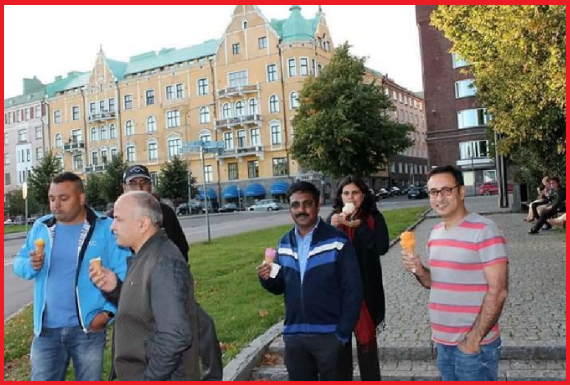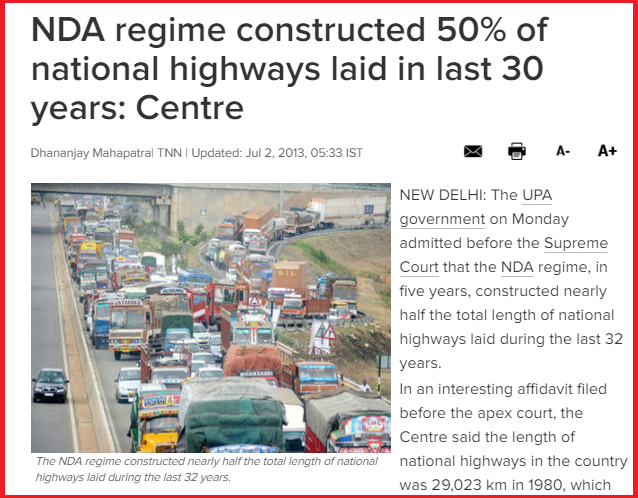I will comment on the rest of the states and bypolls tomorrow, but today is all about Kairana.
I was waiting all day for the final numbers to emerge.
A win is a win and a defeat is a defeat. But I always say that in every victory are the seeds of defeat and in every defeat the seeds of victory. When the BJP swept Uttar Pradesh in March 2017, I was quite somber indeed, seeing as how hard the arithmetic would get as SP+BSP+Cong+RLD would form a Grand Alliance.
Today I am quite the opposite, really upbeat seeing as how the BJP … believe it or not … is beginning to turn around the ‘impossible’ arithmetic of the Grand Alliance.
Let’s quickly run down the vote shares:
2018: BJP 46.5% United Opposition : 51.1%
2017: BJP 38.2% United Opposition : 57.2%
The BJP was up against an ‘impossible’ wall to climb : a gap of 19% in vote shares. So how did the BJP do in this task?
The lead of 19% that the United Opposition had over the BJP has shrunk to just 4.6%. This shows that mutual transfer of votes between opposition parties has simply failed to take off on the ground in Uttar Pradesh.
At this point you might be tempted to say: Look, maybe the Opposition didn’t get as massive a lead as they expected. But a 4.6% lead is not small and is more than enough for a fairly big victory. Spread out uniformly across Uttar Pradesh, it could be enough even to sweep the state. Are you looking to claim a ‘moral victory’?
To that I say: not at all. Because we have not yet adjusted for the biggest factor while understanding bypolls.
The turnout.
Since these bypolls do not really play any role in deciding the Central/State government, a substantial population would stay at home. Only the most motivated voters would come out. So, how many voters stayed back home in Kairana? Let’s find out.
In 2018, Kairana LS saw a voter turnout of just 54%, which is a *huge* drop of 18% from the turnout in 2014.
And here are the turnout figures of 2017 for the five assembly seats that make up the Kairana LS seat:
2 – Nakur : 77.56%
7 – Gangoh : 72.01%
8 – Kairana : 69.57%
9 – Thana Bhawan : 68.31%
10 – Shamli : 65.48%
This is much more than the mere 54% turnout recorded in Kairana bypoll.
No reasonable projection for the real election in 2019 can be made without thinking about these “missing” 15% of voters. The gap between BJP and the United Opposition was 4.6% in this bypoll.
It is not hard to imagine whose voters did not come out for this bypoll. Could Muslims, who are highly motivated to strike a blow against the BJP, possibly have stayed home, that too when they were given the opportunity to elect Tabassum Begum to be the only Muslim representing UP in this Lok Sabha?
Come on…
Will the United Opposition’s 4.6% margin still hold when the remaining 15% come out of their homes to vote in 2019?
This seems highly doubtful.
Now let us consider the demographics of Kairana Lok Sabha constituency. The Muslims account for around 35%, but accounting for a higher turnout among them, it may be safely assumed that Muslims make up around 40% of the votes counted today.
This means that roughly 60% of the vote came from Hindus, of which 46.5% went to the BJP.
That is a staggering 77%. More than the three fourths of Hindus who voted chose the BJP.
This is really bad news for over eager anchors who are desperate to write the BJP’s obituary. Forget alienating Dalits, Jats, Jatavs … etc from the BJP, we have just witnessed a massively polarized, united Hindu vote for the BJP in Western Uttar Pradesh.
The BJP’s performance among Hindu voters across ALL sections of society today in Kairana now rivals the performance of SP among Yadav voters and performance of Mayawati among Jatav voters!
If this level of Hindu unity repeats across Uttar Pradesh, the United Opposition is in a world of trouble.
Especially as the opposition and its media cheerleaders go into overdrive celebrating this bypoll win in Kairana. The only thing they are likely to achieve is raising the level of Hindu consolidation in favor of BJP.
Remember that it is already 77%. There is hardly a Hindu family in Kairana today where people are not smarting in anger at the defeat at the hands of Tabassum Begum. Wonder how they will react to the celebrations of the United Opposition.
One final comment. I am not trying to take anything away from the Opposition, nor advocating for a ‘moral victory’. They won fair and square and deserve to enjoy their win. I just want to illustrate with an example.
Back when I was a little child, India would lose almost every cricket match to Pakistan. And towards the end, I would begin to cry. My father would then intervene maturely and say: “They played better. They had better commitment. They deserved to win.”
I will say the same to BJP supporters today who must be distraught. They had better commitment. They stood in lines in the blistering heat without a morsel of food nor a drop of water. They deserved to win.
















